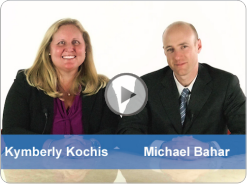What Autonomous Vehicles Could Mean for the Future of Washington, DC
The one thing that’s certain about the autonomous future heralded by executives in Detroit and Silicon Valley is a future that’s either years or decades away, depending on which experts you consult: It will entail more driving.
By the year 2040, the nation’s capital could be a bustling network of autonomous vehicles, with better access to jobs on its eastern and western extremities. Traffic would glide smoothly on freeways — the cars automatically keeping a safe distance by “talking” to one another — with no empty seats in the roving fleet of vehicles. The system would complement a healthy Metro that shuttles passengers between commuting hubs in the District, Maryland and Virginia.
Under another scenario, however, bumper-to-bumper traffic stretches for miles and hits the poorest neighborhoods and communities of color hardest. More people opt for the seeming comfort of a solo car ride even if it takes them longer. Low-income neighborhoods and communities of color are left in a cloud of vehicle emissions. And Metro, with the sudden shift toward cheap car commuting further depleting its ridership base, is a system on the brink.




